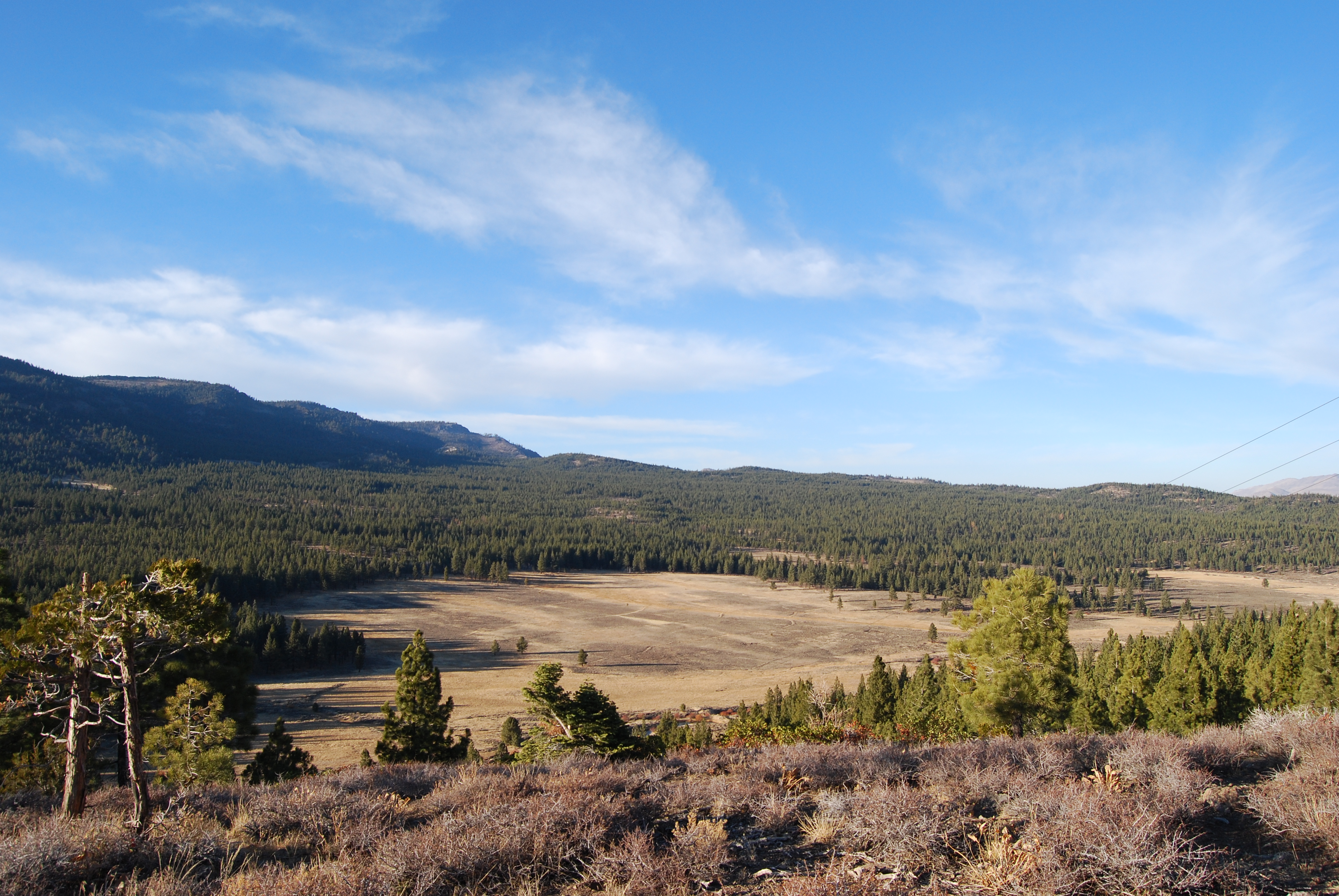|
James L. Reveal
James Lauritz Reveal (March 29, 1941 – January 9, 2015) was a U.S. botanist best known for his contributions to the genus '' Eriogonum'' and for his work on suprageneric names. His website, at PlantSystematics.org, also presents material on plant taxonomy including the Reveal system. He published extensively on North American flora, was a member of the Angiosperm Phylogeny Group, and was one of the authors of the APG II and APG III classifications. At the time of his death, Reveal was a professor emeritus at the University of Maryland, adjunct professor at Cornell University's Department of Plant Biology and honorary curator at the New York Botanical Garden. Biography Early life and education James Lauritz Reveal was born on March 29, 1941, in Reno, Nevada to Arlene Hadfield Reveal and Jack Lilburn Reveal (1912-1988), a librarian and a forester/botanist, respectively. Reveal attended Utah State University (B.S. 1964, M.S. 1966) and received his Ph.D. from Brigham Young Univers ... [...More Info...] [...Related Items...] OR: [Wikipedia] [Google] [Baidu] |
Reno, Nevada
Reno ( ) is a city in the northwest section of the U.S. state of Nevada, along the Nevada–California border. It is the county seat and most populous city of Washoe County, Nevada, Washoe County. Sitting in the High Eastern Sierra foothills, in the Truckee River valley, on the eastern side of the Sierra Nevada, it is about northeast of Lake Tahoe. Known as "The Biggest Little City in the World", Reno is the List of United States cities by population, 78th most populous city in the United States, the List of cities in Nevada, third most populous city in Nevada, and the most populous in Nevada outside the Las Vegas Valley. The city had a population of 264,165 at the 2020 United States census, 2020 census. The city is named after Civil War Union major general Jesse L. Reno, who was killed in action during the American Civil War at the Battle of South Mountain, on Fox's Gap. Reno is part of the Reno, NV Metropolitan Statistical Area, Reno–Sparks metropolitan area, the second-m ... [...More Info...] [...Related Items...] OR: [Wikipedia] [Google] [Baidu] |
Endangered Species Act
The Endangered Species Act of 1973 (ESA; 16 U.S.C. § 1531 et seq.) is the primary law in the United States for protecting and conserving imperiled species. Designed to protect critically imperiled species from extinction as a "consequence of economic growth and development untempered by adequate concern and conservation", the ESA was signed into law by President Presidency of Richard Nixon#Environmental policy, Richard Nixon on December 28, 1973. The Supreme Court of the United States described it as "the most comprehensive legislation for the preservation of endangered species enacted by any nation"."Tennessee Valley Authority v. Hill" 437 U.S. 153 (1978) Retrieved 24 November 2015. The purposes of the ESA are two-fold: to prevent extinction and to recover species to the point wher ... [...More Info...] [...Related Items...] OR: [Wikipedia] [Google] [Baidu] |
Huntia (journal)
''Huntia'' is a peer-reviewed scientific journal published by the Hunt Institute for Botanical Documentation, a research division of the Carnegie Mellon University. In continuous publication since 1964, this journal is the institute's scholarly journal of botanical history. The journal is published irregularly in one or more numbers per volume of approximately 200 pages by Hunt Institute. Huntia was established by the American botanist George H.M. Lawrence, who was the founding director of the Hunt Institute. Volumes 1 to 7, was issued in 14 volumes, large octavo (folded paper) they were paperback apart from Volume 2 which was clothbound. Vol.2 was reviewed by botanist William C. Steere in June 1966. He noted "outstanding typography, high quality of illustrations and paper, the beautiful style and manufacture all indicate the high standards we have come to anticipate in publications of the Hunt Botanical Library". There was a big gap in publication of the journal when Lawrence ... [...More Info...] [...Related Items...] OR: [Wikipedia] [Google] [Baidu] |
Phytologia
Phytologia is an open-access journal Open access (OA) is a set of principles and a range of practices through which nominally copyrightable publications are delivered to readers free of access charges or other barriers. With open access strictly defined (according to the 2001 de ... to expedite plant systematics, phytogeographical and ecological publication, focused on North America. Its mode of subscription is by sending e-mail to the editor. It has been available online since 2013. It is edited by Robert P. Adams and others. References External links * {{DEFAULTSORT:Phytologia English-language journals Botany journals ... [...More Info...] [...Related Items...] OR: [Wikipedia] [Google] [Baidu] |
The Botanical Review
The New York Botanical Garden (NYBG) is a botanical garden at Bronx Park in the Bronx, New York City. Established in 1891, it is located on a site that contains a landscape with over one million living plants; the Enid A. Haupt Conservatory, a greenhouse containing several habitats; and the LuEsther T. Mertz Library, which contains one of the world's largest collections of botany-related texts. , over a million people visit the New York Botanical Garden annually. NYBG is also a major educational institution, teaching visitors about plant science, ecology, and healthful eating through NYBG's interactive programming. Nearly 90,000 of the annual visitors are children from underserved neighboring communities. An additional 3,000 are teachers from New York City's public school system participating in professional development programs that train them to teach science courses at all grade levels. NYBG operates one of the world's largest plant research and conservation programs. NY ... [...More Info...] [...Related Items...] OR: [Wikipedia] [Google] [Baidu] |
Botanical Journal Of The Linnean Society
The ''Botanical Journal of the Linnean Society'' is a scientific journal publishing original papers relating to the taxonomy of all plant groups and fungi, including anatomy, biosystematics, cytology, ecology, ethnobotany, electron microscopy, morphogenesis, palaeobotany, palynology and phytochemistry.Botanical Journal of the Linnean Society The journal is published by the and is available in both print and searchable online formats. Like the '' Biological Journal of ... [...More Info...] [...Related Items...] OR: [Wikipedia] [Google] [Baidu] |
Phytotaxa
''Phytotaxa'' is a peer-reviewed scientific journal for rapid publication on any aspect of systematic botany. It publishes on a wide range of subjects, but focuses on new species, monographs, floras, revisions, reviews, and typification issues. ''Phytotaxa'' covers all plant groups covered by the International Code of Nomenclature for algae, fungi, and plants, including diatoms, fungi, algae, lichens, mosses, hornworts, liverworts, and vascular plants), both living and fossil. The journal was established in 2009 by Maarten Christenhusz and the first issue appeared in October 2009. Authors have the option to publish open access. Abstracting and indexing The journal is abstracted and indexed in Science Citation Index Expanded, Current Contents/Agriculture, Biology & Environmental Sciences, and BIOSIS Previews. See also * Zootaxa ''Zootaxa'' is a peer-reviewed scientific mega journal for animal taxonomists. It is published by Magnolia Press (Auckland, New Zealand). The jou ... [...More Info...] [...Related Items...] OR: [Wikipedia] [Google] [Baidu] |
Revealia
''Revealia'' is a genus of Mexican plants in the tribe Eupatorieae within the family Asteraceae.King, Robert Merrill & Robinson, Harold Ernest. 1976. Phytologia 33(4): 277-280 descriptions in Latin, commentary in English, photos of type specimenD.J.N.Hind & H.E.Robinson. 2007. Tribe Eupatorieae In: ''The Families and Genera of Vascular Plants'' vol.VIII. (Joachim W.Kadereit & Charles Jeffrey, volume editors. Klaus Kubitzky, general editor). Springer-Verlag. Berlin, Heidelberg. The only known species is ''Revealia macrocephala'', native to the State of |
Species Description
A species description is a formal scientific description of a newly encountered species, typically articulated through a scientific publication. Its purpose is to provide a clear description of a new species of organism and explain how it differs from species that have been previously described or related species. For a species to be considered valid, a species description must follow established guidelines and naming conventions dictated by relevant nomenclature codes. These include the International Code of Zoological Nomenclature (ICZN) for animals, the International Code of Nomenclature for algae, fungi, and plants (ICN) for plants, and the International Committee on Taxonomy of Viruses (ICTV) for viruses. A species description often includes photographs or other illustrations of type material and information regarding where this material is deposited. The publication in which the species is described gives the new species a formal scientific name. Some 1.9 million ... [...More Info...] [...Related Items...] OR: [Wikipedia] [Google] [Baidu] |
Polygonaceae
The Polygonaceae are a Family (biology), family of flowering plants known Common name, informally as the knotweed family or smartweed—buckwheat family in the United States. The Botanical name, name is Basionym, based on the genus ''Polygonum'', and was first used by Antoine Laurent de Jussieu in 1789 in his book, ''Genera Plantarum''.Antoine Laurent de Jussieu. 1789. ''Genera plantarum: secundum ordines naturales disposita, juxta methodum in Horto regio parisiensi exaratam''. page 82. Herrisant and Barrois: Paris, France. (see ''External links'' below) The name may refer to the many swollen Node (botany), nodes the stems of some species have, being Etymology, derived from Greek language, Greek ( meaning and meaning or ). Alternatively, it may have a different origin, meaning 'many seeds'. The Polygonaceae comprise about 1200 speciesDavid J. Mabberley. 2008. ''Mabberley's Plant-Book'' third edition (2008). Cambridge University Press: UK. distributed into about 48 genera. The l ... [...More Info...] [...Related Items...] OR: [Wikipedia] [Google] [Baidu] |
Robert F Thorne
Robert F. Thorne (July 13, 1920 – March 24, 2015) was an American botanist. He was taxonomist and curator emeritus at Rancho Santa Ana Botanic Garden and professor emeritus at Claremont Graduate University in Claremont, California. His research has contributed to the understanding of the evolution of flowering plants. Life Thorne was born on July 13, 1920, in Spring Lake, New Jersey. He was educated through high school in Gulfport and St. Petersburg, Florida.Rancho Santa Ana Botanic Garden Library. "Finding Aid for the Robert Folger Thorne Papers 1905-1988" (2009), p. 1. He graduated ''summa cum laude'' in 1941 with a major in botany from Dartmouth College and earned a M.S. degree in economic botany in 1942 at Cornell University.Hamilton, Clement W. "Robert F. Thorne - Recipient of the 2001 Asa Gray Award", ''Systematic Botany''(2002), 27(1): p. 2. He spent about three years serving in the armed forces during World War II, first at Hondo Navigation School, Texas, graduating a ... [...More Info...] [...Related Items...] OR: [Wikipedia] [Google] [Baidu] |
APG III System
The APG III system of flowering plant classification is the third version of a modern, mostly molecular-based, system of plant taxonomy being developed by the Angiosperm Phylogeny Group (APG). Published in 2009, it was superseded in 2016 by a further revision, the APG IV system. Along with the publication outlining the new system, there were two accompanying publications in the same issue of the Botanical Journal of the Linnean Society: * The first, by Chase & Reveal, was a formal phylogenetic classification of all land plants (embryophytes), compatible with the APG III classification. As the APG have chosen to eschew ranks above order, this paper was meant to fit the system into the existing Linnaean hierarchy for those that prefer such a classification. The result was that all land plants were placed in the class Equisetopsida, which was then divided into 16 subclasses and a multitude of superorders. * The second, by Haston ''et al.'', was a linear sequence of families fol ... [...More Info...] [...Related Items...] OR: [Wikipedia] [Google] [Baidu] |




